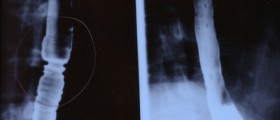
Dystonia is an involuntary muscle contraction leading to twisting movements and abnormal postures. In cases of focal dystonia, just a single part of the body of a person gets exposed to these abnormalities. When many parts of the body are affected by distonia, the condition is referred to as generalized dystonia.
Reasonably, dystonia can be quite impairing, leading to various lifestyle problems, depending on the type of dystonia present in one's life. One of the possible variants of focal dystonia is the writer's cramp.
What is Writer's Cramp?
Basically, writer's cramp can be characterized as a special form of task-specific focal dystonia. We have two types of muscles in our hand area, agonist and antagonist muscles, contracting and relaxing interchangeably. When one is contracted the other one needs to be relaxed and vice-versa. However, in cases of writer's cramp, this is not possible and both muscles get contracted, leading to a state of cramp.
Many parts of the body are involved in this form of dystonia, including our spine, the basal ganglia and the brain. The abnormalities in the basal ganglia trigger disruptions in the sensory processes and the subsequent motor output of the body. This, combined with the prevention of the increase of the levels of cerebral fluids leads to abnormal symptoms which commonly depict this condition.Today, in the US, about 69 people suffer from writer's cramp on every 100,000 individuals. However, bearing in mind that a vast majority of people never even seek the proper medical support for this health problem, the occurrence may be much more frequent.
Regardless, more men suffer from this condition than women and a typical patient is from 30 to 50 years old. Yet, women usually display the symptoms of this condition earlier.
The symptoms of the writer's cramp involve cramping, lack of coordination and pain in the hand during specific actions performed. These symptoms are usually the first ones to appear. Later on, the hand assumes a fixed position and the fingers can become abnormally flexed or abnormally tensed, with supination and pronation present as well. If a person tries to perform a specific task during this time, he/she is bound to experience pain and discomfort.Taking into consideration that these types of movements are commonly necessary during writing, the name writer's cramp was assigned to this form of dystonia. However, patients who suffer from similar symptoms may have problems related to writing tremor, appearing only during writing tasks.
How is Dystonia of the Hand Treated?First of all, it is good to know that in about 5% of all cases, the symptoms of this condition disappear without any medical treatment. Usually, the period for this remission is within 5 years.
As for any active forms of treatment, these frequently do not manage to help one deal with the problem. Nevertheless, transcutaneous electrical nerve stimulation, applied to the forearm flexor muscles over two weeks has proven to be of assistance, leading to a decrease in the appearance of the symptoms. The effect of this treatment remains present for about 3 weeks.Some people have even managed to deal with the dystonia of the hand through biofeedback therapy, hypnotherapy and relaxation therapy. Also, performing some exercises like gripping a pen or an object repeatedly or using some other means of transcription for writing are all possible solutions. Finally, some success has been related with thalamotomy and thalamic deep brain stimulation, frequently being effective for some more serious cases.
As far as medications are concerned, there are several treatment options related to this too. Namely, writer's cramp has been treated with beta-blockers, helping one deal with the tremors and anticholinergic medication, reducing the symptoms of dystonia.Nevertheless, this condition remains quite demanding and complex, both in the terms of diagnosis and treatment. Some patients react to injections of Botox and some react to alternative treatments and therapies. Thus, what proves to be effective for a single person may not be such for someone else.
Knowing the risk factors related to this condition may help you avoid it. Basically, among writer's cramp patients, those who have a college degree are the majority. Also, naturally, writing a lot on a daily basis makes you more susceptible to this condition, especially if the writing routine takes place excessively and abruptly. Numerous patients have even shown a history of head traumas and loss of consciousness, along with myopia.All in all, writer's cramp or a dystonia of the hand is a condition which is usually related to individuals who write or use their hands a lot, manifesting through an involuntary, sustained muscle contraction, affecting the hand only. Due to the fact that many factors may be behind this condition, it is best to have it diagnosed and treated on time.
Thus, if you notice any of the above symptoms, do not hesitate to contact your doctor and seek advice or even treatment.








_f_280x120.jpg)








Your thoughts on this
Loading...